PROPAGANDA: From Conflict To Commerce
Or, how I lit up and learned to love the war
March 23, 2023
Illustration: Will Novosedlik
They say the first victim of war is the truth.
No one understood this better than wartime president Woodrow Wilson, who can rightly be credited as one of the fathers of propaganda. The biggest plank in Wilson’s 1916 election platform was his promise to keep America out of the war. But the bankers, who realized that the millions they had lent to France and Britain would never be paid back if they lost to the Germans, put enormous pressure on Wilson to send troops to better the odds of an allied win.
Wilson’s problem? How to convince American voters to send their sons across the ocean to die. The first thing he did was curtail press freedoms by setting up a censorship panel, suppressing any news outlets that opposed the war. On that panel was an ex-journalist named George Creel, who was tasked with the creation of the Committee on Public Information (later called the Creel Commission) – the propaganda arm of the US government.
Creel hired Edward L. Bernays, a nephew of Sigmund Freud and a pioneer of group psychology. He had no trouble distorting the truth in the service of the war effort. “The conscious and intelligent manipulation of the opinions of the masses is an important element in democratic society,” Bernays wrote a few years after the war. The keyword here is ‘manipulation’. His insight was that you don’t persuade with truth and reason; you manipulate with emotion and hyperbole.

In war, your most important task is to depict the enemy as an inhuman monster.
After his work for the Creel Commission, he wrote a book called Propaganda. It became the playbook on how to communicate to the masses effectively and persuasively, and as such it marks the emergence of modern public relations and advertising. It also became the playbook used, to great success, by Nazi Minister of Propaganda Josef Goebbels during WWII.
The thing about propaganda is that it never changes, and its principles are used in exactly the same way by all sides in a war, over and over again.
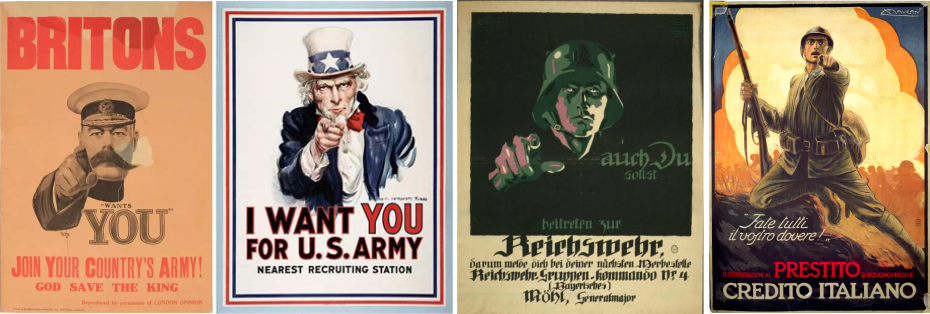
WW1 recruitment posters. The first to employ this image were the British, quickly imitated by the Americans, Germans and Italians.
In fact, as soon as a war starts, propagandists can be relied upon to dust off the same myths and tropes used so effectively in previous conflicts, as evidenced in the poster below, seen in Donetsk in 2014. The copy translates as “repeat the heroism of our forefathers and enroll in the army of the DNR” (Donetsk separatists).
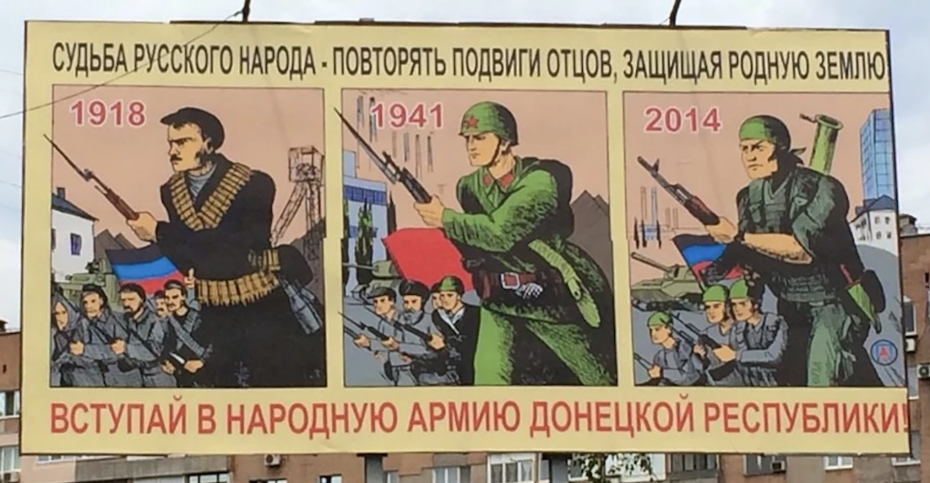
Nothing like indebtedness to one’s forefathers to get you to take up arms. Photo: Christopher Miller.
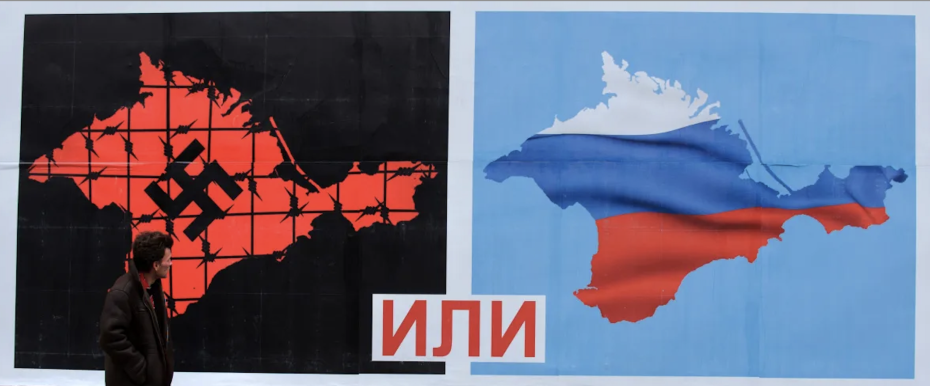
During the run up to a 2014 referendum on whether Crimea should remain part of Ukraine, this poster frames the vote as a replay of the Soviet Union’s fight against fascism in the Second World War, portraying the politicians in Kiev as Nazi nationalists and racists. Photo: PBS Frontline.
A key objective of all propaganda is to remove any shred of doubt in the minds of the masses. To achieve this the messaging must always be based on a kernel of truth, however small. The poster above pushes a narrative that Kiev is run by Nazis, which is not true, but that does not mean there are no neo-Nazis in the Ukraine. It’s well-known that a 900-member far-right, ultra-nationalist all-volunteer infantry military unit called the Azov group exists and is accused of harbouring a neo-Nazi and white supremacist ideology. It is also true that in WWII a similar group collaborated with the Nazis against the Soviets. These two datapoints are enough for propagandists to build out a patently false narrative.
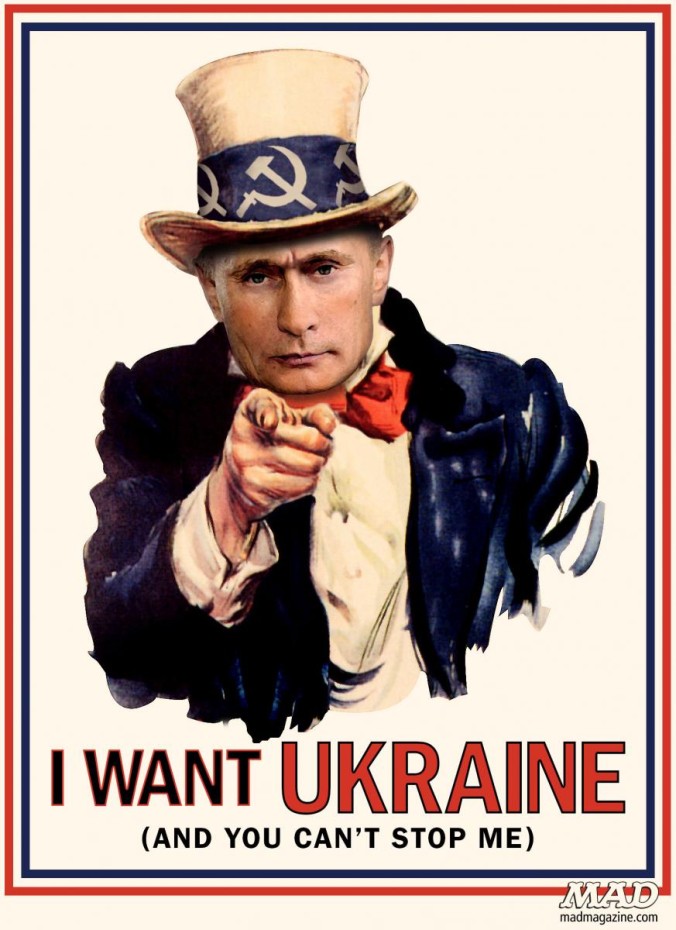
Iconic propaganda must be the most recycled imagery ever devised. As depicted above, Uncle Sam and Uncle Vladimir are basically the same guy. Here, even Mad magazine jumps into the warmongering fray.
One of the most difficult and dangerous things to do in a propaganda war is to criticize your own side. While the United States likes to call out Russia’s many foreign invasions under Putin, it is considered treasonous to point out that America has a pretty long rap sheet of its own. Anyone brave enough to say so risks being called a pro-Russian dupe. One person brave enough to expose the hypocrisy is artist Dwayne Booth, aka Mr. Fish, whose work was featured in this column some months back. Below he takes aim at the obscene profits reaped by the military industrial complex as a result of this conflict.
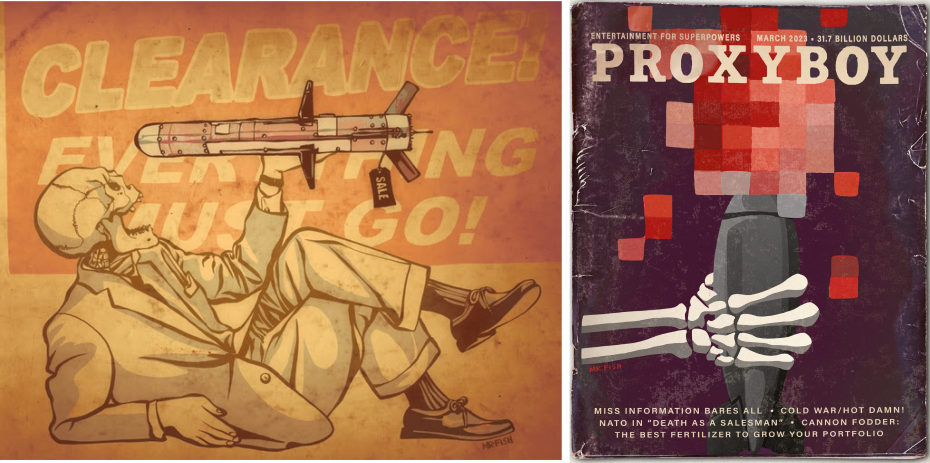
Left: Mr Fish depicts the war as a profit centre for arms manufacturers; right: in a parody of Playboy, the original skin magazine, Mr. Fish conflates sex, death and profit to depict the Ukraine conflict as a proxy war between the US and Russia.
The ease with which propaganda can gird itself for battle one day and for business the next is perhaps its greatest strength. It’s no surprise that Edward Bernays left the government for the world of commerce, where he was able to apply all the same techniques he used during the war to more commercial projects. The other thing Bernays is known for? Convincing women to take up smoking during the 1920s. He called cigarettes ‘torches of freedom’.
Dude was literally a merchant of death.
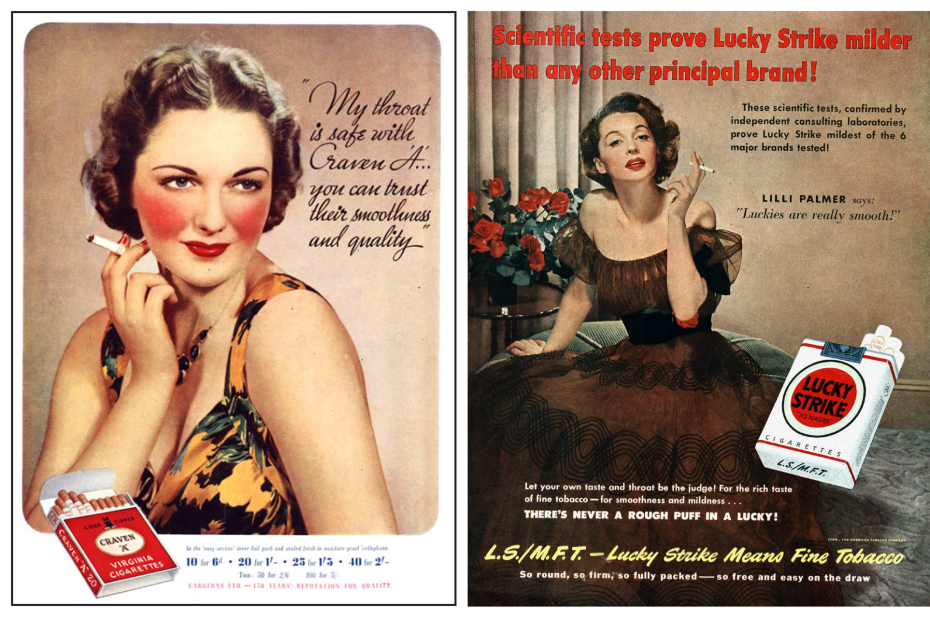
Pseudo-science and psycho-sexuality team up to sell cigarettes. Note the invocation of science - not for its empirical truths but for its mythical sense of unassailable authority, combined with sexualized language: “so round, so firm, so fully packed”.
Ultimately, commerce ends up eating culture, including political propaganda. This writer is old enough to remember how the Red Scare of the 1950s indoctrinated schoolchildren (aka, 7 year-old me) about the evils of Communism through comic books like the one depicted below left. But what scared the crap out of politicians, businesses and boomer schoolkids – i.e., the prospect of a Communist revolution on North America’s shores – was used to sell M&Ms 70 years later.
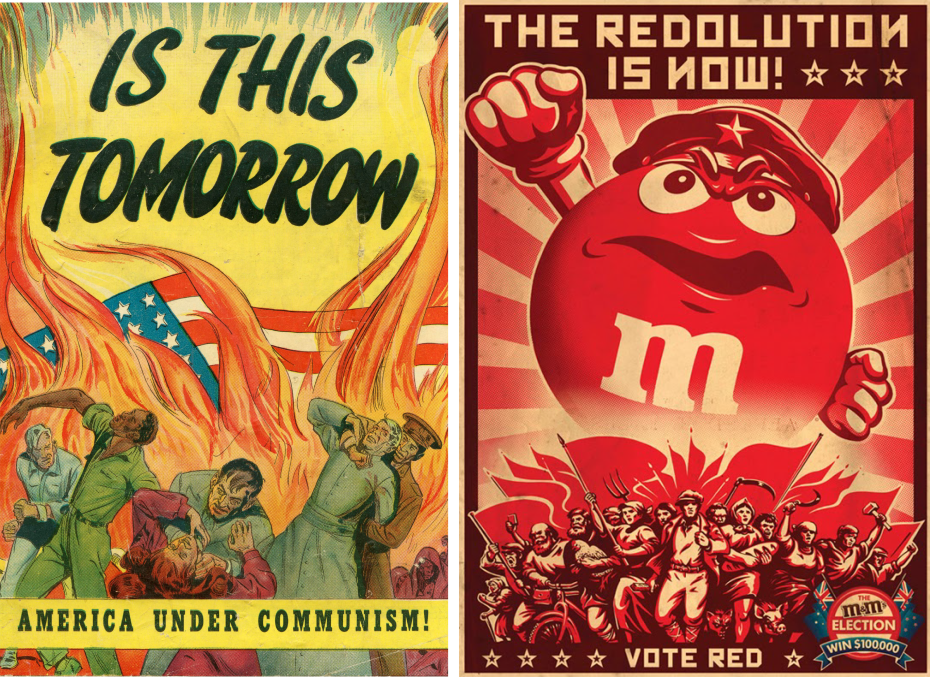
The question posed by the image on the left is all too ironically answered by the image on the right, in which the aesthetic associated with the Russian revolution is deployed not to tear down capitalism but to demonstrate how, eventually, capitalism conquers all, and advertising has the power to turn the entire history of visual culture into grist for the marketing mill. Call it candy-coated triumphalism.
One final thought: while Bernays can be regarded as one of the fathers of modern public relations and advertising, he did not invent the word ‘propaganda’. That was the work of the Roman Catholic church back in the 16th and 17th centuries in response to the protestant reformation and the bloody religious wars that ensued. You can think of it as the very first ad campaign, one that engaged an A-list of visual artists (Michelangelo, Raphael, Caravaggio, Bernini) to get the message out. It was called ‘propaganda fide’ – ‘propagation of the faith’. And it lasted 100 years.
As long as truth gets in the way of war and profit, propaganda is here to stay.
Will Novosedlik is a designer, writer, long-time contributor and editor of Applied Arts magazine. He is known for a critical perspective on the cultural and socio-economic impact of design, brand, business and innovation.







